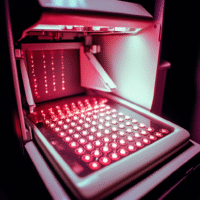Understanding the Study Results
This study looked at two ways to check if an endotracheal tube (ETT) is placed correctly in overweight and obese patients. The ETT is a tube inserted into the windpipe to help patients breathe during surgery. It’s important to confirm it’s in the right place quickly and accurately.
What Worked?
- Tracheal Ultrasound (USG): This method was the fastest, taking about 4 seconds to confirm ETT placement.
- Pleural Ultrasound (USG): This method took longer, about 11 seconds, but it can also help identify if the tube is incorrectly placed in a bronchus.
What Didn’t Work?
- Auscultation (listening with a stethoscope): This method took longer than both ultrasound methods.
- Capnography (measuring carbon dioxide): This was the slowest method for confirming ETT placement.
How Does This Help Patients and Clinics?
Using tracheal ultrasound can speed up the process of confirming tube placement, which is crucial for patient safety during surgeries. Faster confirmation means less time under anesthesia and a quicker start to surgery.
Real-World Opportunities
- Hospitals can train staff to use tracheal ultrasound for quicker ETT confirmations.
- Clinics can adopt pleural ultrasound as a secondary method to check for incorrect placements.
Measurable Outcomes
- Track the average time taken for ETT confirmation using different methods.
- Monitor the number of incorrect placements detected by pleural ultrasound.
AI Tools
Consider using AI tools that assist in ultrasound imaging to improve accuracy and speed in confirming ETT placements.
Step-by-Step Plan for Clinics
- Start Small: Train a small group of staff on tracheal ultrasound techniques.
- Implement Gradually: Begin using tracheal ultrasound in a few elective surgeries.
- Evaluate: After a few months, assess the time taken for ETT confirmation and any improvements in patient outcomes.
- Expand: If successful, train more staff and integrate these methods into regular practice.
For more detailed information, you can read the full study here.


























